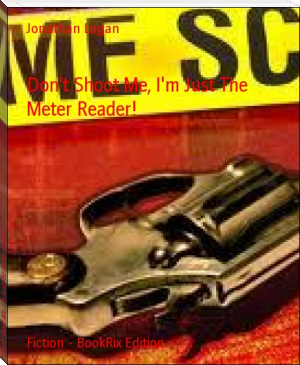The Art of Writing & Speaking the English Language by Sherwin Cody (ereader for comics .TXT) 📕

Having got our bearings, we find before us a purely practical problem, that of leading the student through the maze of a new science and teaching him the skill of an old
Read free book «The Art of Writing & Speaking the English Language by Sherwin Cody (ereader for comics .TXT) 📕» - read online or download for free at americanlibrarybooks.com
- Author: Sherwin Cody
- Performer: B0006AM4CG
Read book online «The Art of Writing & Speaking the English Language by Sherwin Cody (ereader for comics .TXT) 📕». Author - Sherwin Cody
A word consists of one or more syllables to which some definite meaning is attached.
The difficulties of spelling and pronunciation arise largely from the fact that in English twenty-six letters must do duty for some forty-two sounds, and even then several of the letters are unnecessary, as for instance c, which has either the sound of s or of k; x, which has the sound either of ks, gs, or z; q, which in the combination qu has the sound of kw. All the vowels represent from two to seven sounds each, and some of the consonants interchange with each other.
The Sounds of the Vowels.—(1) Each of the vowels has what is called a long sound and a short sound. It is important that these two sets of sounds be fixed clearly in the mind, as several necessary rules of spelling depend upon them. In studying the following table, note that the long sound is marked by a straight line over the letter, and the short sound by a curve.
Long Short āte ăt gāve măn nāme băg
thēse pĕt mē tĕn (com)plēte brĕd
kīte sĭt rīce mĭll līme rĭp
nōte nŏt rōde rŏd sōle Tŏm
cūre bŭt cūte rŭn (a)būse crŭst
scұthe (like)lў
If we observe the foregoing list of words we shall see that each of the words containing a long vowel followed by a single consonant sound ends in silent e. After the short vowels there is no silent e. In each case in which we have the silent e there is a single long vowel followed by a single consonant, or two consonants combining to form a single sound, as th in scythe. Such words as roll, toll, etc., ending in double l have no silent e though the vowel is long; and such words as great, meet, pail, etc., in which two vowels combine with the sound of one, take no silent e at the end. We shall consider these exceptions more fully later; but a single long vowel followed by a single consonant always takes silent e at the end. As carefully stated in this way, the rule has no exceptions. The reverse, however, is not always true, for a few words containing a short vowel followed by a single consonant do take silent e; but there are very few of them. The principal are have, give, {(I)} live, love, shove, dove, above; also none, some, come, and some words in three or more syllables, such as domicile.
2. Beside the long and short sounds of the vowels there are several other vowel sounds.
A has two other distinct sounds:
̣ạ broad, like aw, as in all, talk, etc.
ä Italian, like ah, as in far, father, etc.
Double o has two sounds different from long or short o alone:
long ōō as in room, soon, mood, etc.
short ŏŏ, as in good, took, wood, etc.
Ow has a sound of its own, as in how, crowd, allow, etc.; and ou sometimes has the same sound, as in loud, rout, bough, etc.
(Ow and ou are also sometimes sounded like long o, as in own, crow, pour, etc., and sometimes have still other sounds, as ou in bought).
Oi and oy have a distinct sound of their own, as in oil, toil, oyster, void, boy, employ, etc.
Ow and oi are called proper diphthongs, as the two vowels combine to produce a sound different from either, while such combinations as ei, ea, ai, etc., are called improper diphthongs (or digraphs), because they have the sound of one or other of the simple vowels.
3. In the preceding paragraphs we have given all the distinct vowel sounds of the language, though many of them are slightly modified in certain combinations. But in many cases one vowel will be given the sound of another vowel, and two or more vowels will combine with a variety of sounds. These irregularities occur chiefly in a few hundred common words, and cause the main difficulties of spelling the English language. The following are the leading substitutes:
ew with the sound of u long, as in few, chew, etc. (perhaps this may be considered a proper diphthong);
e (ê, é) with the sound of a long, as in fête, abbé, and all foreign words written with an accent, especially French words;
i with the sound of e long, as in machine, and nearly all French and other foreign words;
o has the sound of double o long in tomb, womb, prove, move, etc., and of double o short in wolf, women, etc.;
o also has the sound of u short in above, love, some, done, etc.;
u has the sound of double o long after r, as in rude, rule;
it also has the sound of double o short in put, pull, bull, sure, etc.;
ea has the sound of a long, as in great; of e long, as in heat; of e short, as in head; of a Italian (ah), as in heart, hearth, etc.;
ei has the sound of e long, as in receive; of a long, as in freight, weight; sometimes of i long, as in either and neither, pronounced with either the sound of e long or i long, the latter being the English usage;
ie has the sound of i long, as in lie, and of e long, as in belief, and of i short, as in sieve;
ai has the sound of a long, as in laid, bail, train, etc., and of a short, as in plaid;
ay has the sound of a long, as in play, betray, say, etc.;
oa has the sound of o long, as in moan, foam, coarse, etc.
There are also many peculiar and occasional substitutions of sounds as in any and many (a as ĕ), women (o as ĭ), busy (u as ĭ), said (ai as ĕ), people (eo as ē), build (u as ĭ), gauge (au as ā), what (a as ŏ), etc.
When any of these combinations are to be pronounced as separate vowels, in two syllables, two dots should be placed over the second, as in naïve.
4. The chief modifications of the elementary sounds are the following:
before r each of the vowels e, i, o, u, and y has almost the same sound (marked like the Spanish ñ) as in her, birth, honor, burr, and myrtle; o before r sometimes has the sound of aw, as in or, for, etc.;
in unaccented syllables, each of the long vowels has a slightly shortened sound, as in f_a_tality, n_e_gotiate, int_o_nation, ref_u_tation, indicated by a dot above the sign for the long sound; (in a few words, such as d_i_gress, the sound is not shortened, however);
long a (â) is slightly modified in such words as care, fare, bare, etc., while e has the same sound in words like there, their, and where; (New Englan{d}פּ people give a the short sound in such words as care, etc., and pronounce there and where with the short sound of a, while their is pronounced with the short sound of e: this is not the best usage, however);
in pass, class, command, laugh, etc., we have a sound of a between Italian a and short a (indicated by a single dot over the a), though most Americans pronounce it as short, and most English give the Italian sound: the correct pronunciation is between these two.
The Sounds of the Consonants. We have already seen that there are two
classes of consonant sounds, those which have a voice sound, as b,
called sonant, and those which are mere breath sounds, like p,
called surds or aspirates. The chief difference between b and p
is that one has the voice sound and the other has not. Most of the
other consonants also stand in pairs. We may say that the sonant
consonant and its corresponding surd are the hard and soft forms of
the same sound. The following table contains also simple consonant
sounds represented by two letters:
Sonant Surd
b p
d t
v f
g (hard) k
j ch
z s
th (in thine) th (in thin)
zh (or z as in azure) sh
w
y
l
m
n
r h
If we go down this list from the top to the bottom, we see that b is the most closed sound, while h is the most slight and open, and the others are graded in between (though not precisely as arranged above). These distinctions are important, because in making combinations of consonants in the same syllable or in successive syllables we cannot pass abruptly from a closed sound to an open sound, or the reverse, nor from a surd sound to a sonant, or the reverse. L, m, n, and r are called liquids, and easily combine with other consonants; and so do the sibilants (s, z, etc.). In the growth of the language, many changes have been made in letters to secure harmony of sound (as changing b to p in sub-port——support, and s, to f in differ—from dis and fero). Some combinations are not possible of pronunciation, others are not natural or easy; and hence the alterations. The student of the language must know how words are built; and then when he comes to a strange word he can reconstruct it for himself. While the short, common words may be irregular, the long, strange words are almost always formed quite regularly.
Most of the sonants have but one sound, and none of them has more than three sounds. The most important variations are as





Comments (0)